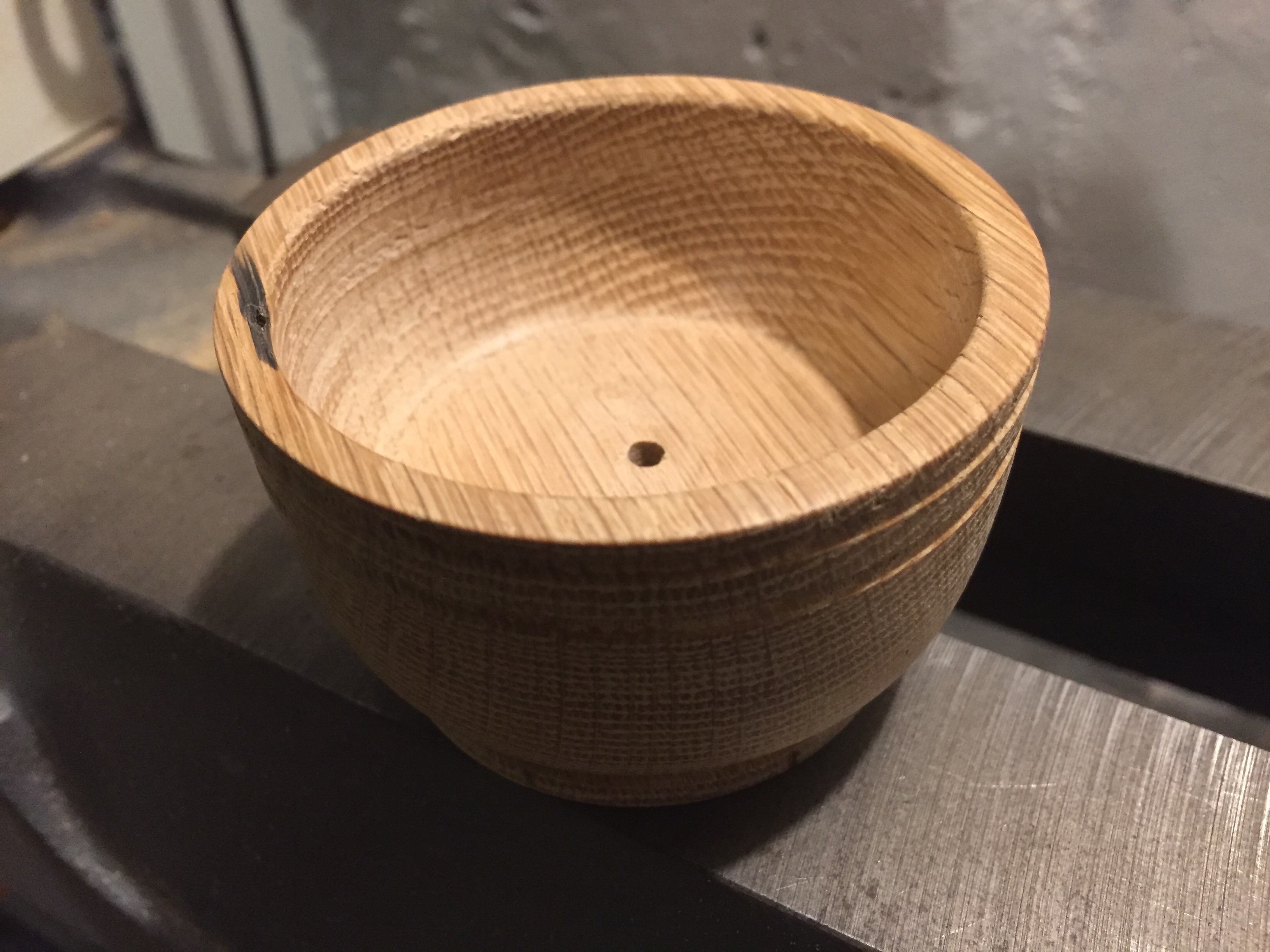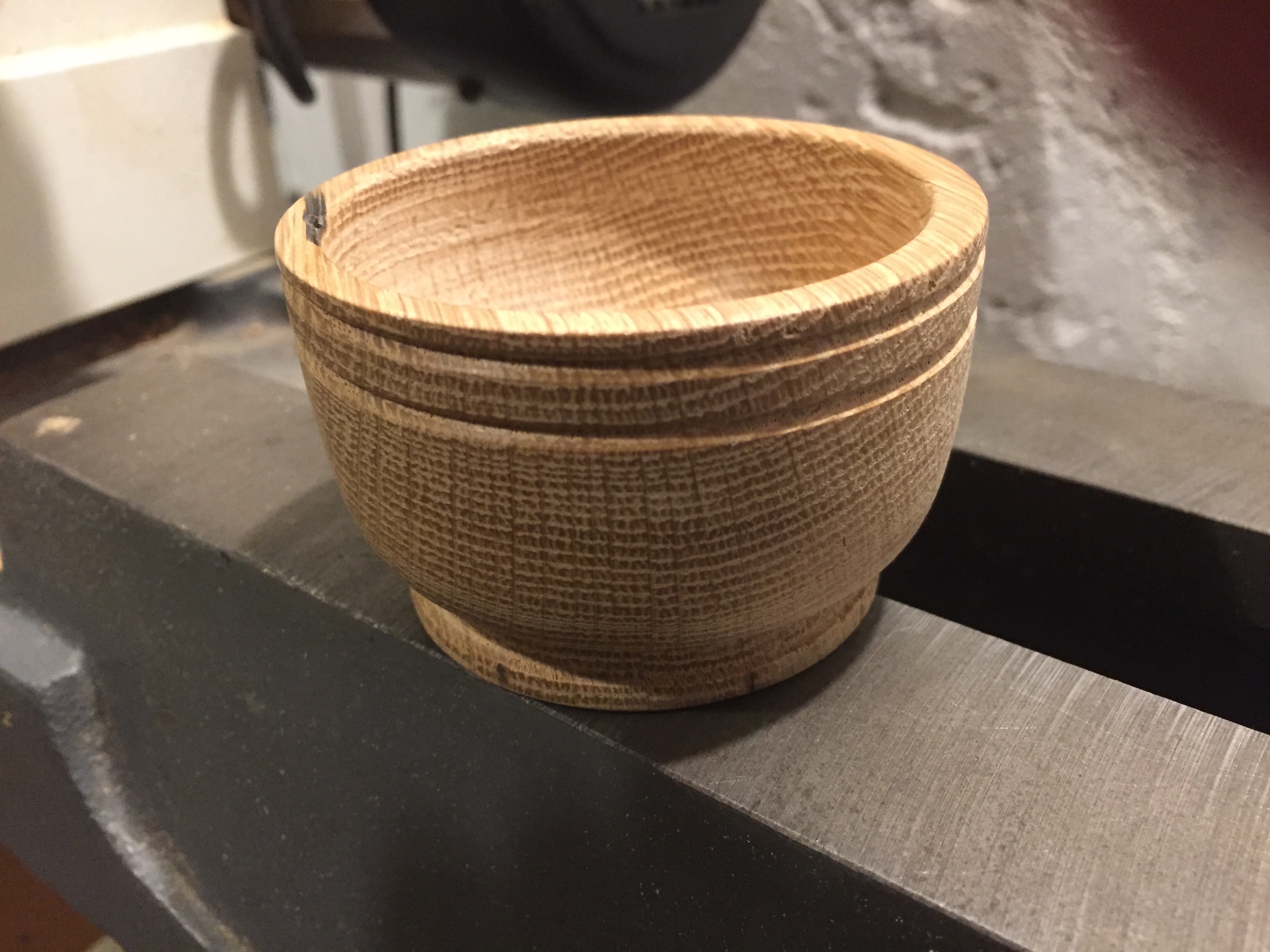Elsmorian
Member
Hi all,
I went on the 2 day Axminster wood turning course at the beginning of the year and really enjoyed it, so after some hunting and getting my own space I bought an Axminster AWVSL900 from WellsWood on this forum and have just set it up and turned my first thing since the course, was going for a hair-pin bowl just as something small and simple to start with.
I'm not sure what the wood is, it might be bits of window framing, not sure if WellsWood can remember - they came with the lathe. Either way it felt much harder than the stuff on the course which was some yew, ash and beech I think. I suspect I also need to sharpen my tools, but I think its ok for a first go - plenty of room for improvement!


I think it's a little chunky, maybe a bit tall and shallow - room for improvement for sure
One thing I would like to ask - When roughing out the piece to get it fairly round and sometimes when turning the outside, I seem to introduce some judder into the piece, like the part I'm currently working has become off centre. I'm able to clear this up by trying lighter passes though it can take a while, so maybe I'm taking off too much at once? Hope that makes sense!
I went on the 2 day Axminster wood turning course at the beginning of the year and really enjoyed it, so after some hunting and getting my own space I bought an Axminster AWVSL900 from WellsWood on this forum and have just set it up and turned my first thing since the course, was going for a hair-pin bowl just as something small and simple to start with.
I'm not sure what the wood is, it might be bits of window framing, not sure if WellsWood can remember - they came with the lathe. Either way it felt much harder than the stuff on the course which was some yew, ash and beech I think. I suspect I also need to sharpen my tools, but I think its ok for a first go - plenty of room for improvement!


I think it's a little chunky, maybe a bit tall and shallow - room for improvement for sure
One thing I would like to ask - When roughing out the piece to get it fairly round and sometimes when turning the outside, I seem to introduce some judder into the piece, like the part I'm currently working has become off centre. I'm able to clear this up by trying lighter passes though it can take a while, so maybe I'm taking off too much at once? Hope that makes sense!
































